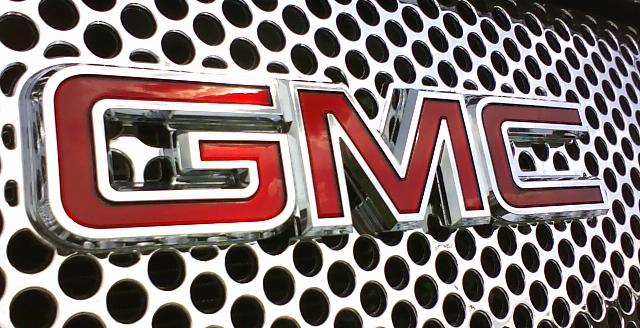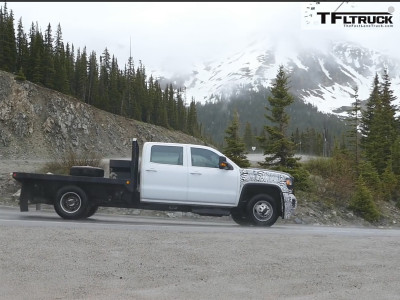Trenden går mot stålkolvar i nya motorer. Både för personbilar och tunga fordon. Detta är ett paradigmskifte som öppnar för mer CGI. Stålkolvar och aluminiumblock har för stor skillnad i expansionskoefficient. Aluminiumblocket utvidgar sig mer än stålkolven. Friktionen minskar men samtidigt ökar läckage och ljudnivå. Vanligt gjutjärn blir för tungt. Ett block i CGI passar perfekt tillsammans med stålkolvar.
Detta kan dramatiskt öka användningen av CGI. Både för bensin och diesel för såväl raka som V-motorer.
Lite nyttig läsning om stålkolvar
In diesel engines, steel pistons provide significant potential for reducing CO2 emissions in comparison with the aluminum pistons that have been typical up to now. After a long history of positive results in commercial vehicles, MAHLE has therefore developed steel pistons for passenger car diesel engines to the point of series production readiness. Significant advantages result from the frictional loss. Thermodynamic conditions additionally result in advantages in combustion that lead to a reduction in fuel consumption and emissions levels. The lower compression height of a steel piston can also be utilized to increase the swept volume or to decrease the height of the engine. The first series application of a MAHLE steel piston in a passenger car diesel engine is scheduled for 2014.
The slugs of aluminum inside your engine live in a fiery hell. At full throttle and 6000 rpm, a piston in a gasoline engine is subjected to nearly 10 tons of force every 0.02 second as repeated explosions heat the metal to more than 600 degrees Fahrenheit.
These days, that cylindrical Hades is hotter and more intense than ever, and it’s only likely to get worse for pistons. As automakers chase higher efficiency, piston manufacturers are preparing for a future in which the most-potent naturally aspirated gasoline engines produce 175 horsepower per liter, up from 130 today. With turbocharging and increased outputs come even tougher conditions. In the past decade, piston operating temperatures have climbed 120 degrees, while peak cylinder pressures have swollen from 1500 psi to 2200.
A piston tells a story about the engine in which it resides. The crown can reveal the bore, the number of valves, and whether or not the fuel is directly injected into the cylinder. Yet a piston’s design and technology can also say a lot about the wider trends and challenges facing the auto industry. To coin a maxim: As the automobile goes, so goes the engine; and as the engine goes, so goes the piston. In the quest for improved fuel economy and lower emissions, automakers are asking for lighter, lower-friction pistons with the stamina to endure tougher operating conditions. It is these three concerns—durability, friction, and mass—that consume the piston suppliers’ workdays.
In many ways, gasoline-engine development is following the path laid out by diesels 15 years ago. To compensate for the 50-percent increase in peak cylinder pressures, some aluminum pistons now have an iron or steel insert to support the top ring. The hottest gasoline engines will soon require a cooling gallery, or an enclosed channel on the underside of the crown that’s more efficient at removing heat than today’s method of simply spraying the piston’s underside with oil. The squirters shoot oil into a small opening on the bottom of the piston that feeds the gallery. The seemingly simple technology isn’t easy to manufacture, though. Creating a hollow passage means casting the piston as two pieces and joining them via friction or laser welding.
Pistons account for at least 60 percent of the engine’s friction, and improvements here have a direct impact on fuel consumption. Friction-reducing, graphite-impregnated resin patches screen-printed onto the skirt are now nearly universal. Piston supplier Federal-Mogul is experimenting with a tapered face on the oil ring that allows a reduction in the ring tension without increasing oil consumption. Lower ring friction can unlock as much as 0.15 horsepower per cylinder.
Automakers are also hungry for new friction-reducing finishes between parts that rub or rotate against each other. The hard and slippery diamond-like coating, or DLC, holds promise for cylinder liners, piston rings, and wrist pins, where it can eliminate the need for bearings between the pin and connecting rod. But it’s expensive and has few applications in today’s cars.
“The [manufacturers] are discussing DLC often, but whether or not they will make it into production cars is a question mark,” says Joachim Wagenblast, senior director of product development at Mahle, a German auto-parts supplier.
Increasingly sophisticated computer modeling and more-precise manufacturing methods also enable more-complex shapes. In addition to the bowls, domes, and valve indents needed for clearance and to achieve a particular compression ratio, asymmetric skirts feature a smaller, stiffer area on the thrust side of the piston to reduce friction and stress concentrations. Flip a piston over and you’ll see tapered walls scarcely more than 0.1 inch thick. Thinner walls require tighter control on tolerances that are already measured in microns, or thousandths of a millimeter.
Thinner walls also demand a better understanding of the thermal expansion of an object that sometimes has to warm from below freezing to several hundred degrees in a matter of seconds. The metal in your engine doesn’t expand uniformly as it heats up, so optimizing tolerances requires the design experience and precise machining capabilities to create slight eccentricities in the parts.
“Nothing we make is straight or round deliberately,” says Keri Westbrooke, director of engineering and technology at Federal-Mogul. “We’re always building in some compensation.”
Diesel-engine pistons are undergoing their own evolution as peak cylinder pressures rise toward 3600 psi. Mahle and Federal-Mogul are predicting a shift from cast aluminum to forged steel pistons. Steel is denser than aluminum but three times stronger, leading to a piston that is more resilient to higher pressures and temperatures with no increase in weight.
Steel enables a notable change in geometry by shortening the piston’s compression height, defined as the distance from the center of the wrist pin to the top of the crown. This area accounts for 80 percent of the piston’s weight, so shorter generally means lighter. Critically, a lower compression height doesn’t just shrink the pistons. It also allows for a shorter and lighter engine block as the deck height is reduced.
Mahle manufactures steel pistons for leading-edge turbo-diesel applications, such as the four-time Le Mans–winning Audi R18 TDI and Mazda’s LMP2 Skyactiv-D engine. The company will begin shipping its first steel pistons for a light-duty production diesel engine, a Renault 1.5-liter four-cylinder, later this year.
The internal-combustion engine’s lasting relevance is due to the continuous evolution of its components. Pistons are not sexy. They’re not as modish as a lithium-ion battery, as complex as a dual-clutch transmission, or as interesting as a torque-vectoring differential. Yet after more than a century of automotive progress, reciprocating pistons continue to produce most of the power that moves us.
———————————–
Kombinationen stålkolvar och CGI-block finns redan i en flygmotor där men speciellt trycker på den goda termiska likheten mellan CGI-blocket och kolvarna
Again, the Graflight V-8 takes advantage of stronger materials in its pistons, employing steel instead of aluminum, which is prone to melting failures. Strong, fatigue-resistant steel allows shorter pistons, reducing overall engine weight. And since steel pistons have almost the same thermal expansion coefficient as the CGI block, engine warm-up damage is minimized. Friction and wear are also reduced compared to aluminum pistons, and cold weather starts are not a problem. Taken together, the CGI block and the steel pistons allow for a target TBO of 3,000 hours, compared with 1,500-2,000 hours for other diesel piston engines.
http://eps.aero/the-eps-engine/reliability-safety-durability/
Blocket i denna kommer från Gainger & Worrall, med Sintercast
Taken together, the CGI block and the steel pistons allow for a target TBO of 3,000 hours, compared with 1,500-2,000 hours for other diesel piston engines.
–
I den nya Duramax 6600 kommer de också med stålkolvar.
We have not been able to confirm whether or not the new engine will feature an aluminum block or CGI (Compacted Graphite Iron). The aluminum block is unlikely if they opt for steel pistons.
Det nuvarande är i gråjärn och då är valet självklart CGI. Annars hade den större motorn inte fått plats…………
http://www.dieselarmy.com/news/video-new-2017-duramax-spotted-hear-it-run/
Navistar har redan stålkolvar i sina CGI-motorer. Detta har jag missat.
Likaså DAF med sin
steel pistons
Cylinder pressures have increased considerably during the past years, i.e. up to the level that cast iron has difficulties to cope with the stress levels. Compacted graphite iron (CGI) has similar mechanical properties as steel but is easier to cast. CGI is frequently used in many new heavy-duty engines and in some passenger car diesel engine blocks. For pistons, however, forged steel is preferred over cast material due to the very small wall thicknesses. Nevertheless, CGI engine block and steel pistons go hand in hand
http://trucks2017.com/2017-duramax-changes-and-power/
One way to make more fuel-efficient engines is to design them to run hotter. To function well at certain, higher temperatures, this may require steel pistons – one of the upgrades GM’s engineers have reportedly been considering. Duramax aficionados are also waiting to find out whether the new model’s engine blocks will be made of aluminum – to reduce weight for improved fuel economy – or compacted graphite iron (CGI). According to automotive engineers, engines equipped with steel pistons would require CGI engine blocks, for durability purposes.
You might also think about reading about the remote tools; continue reading to find out more.
läs även detta nya från dec 2016
http://www.autonews.com/article/20161217/OEM06/312199990/steel-pistons-catch-on-in-europe


